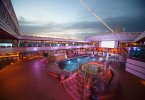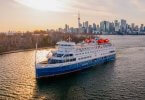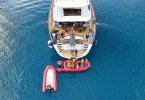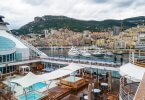The cruise industry is once again at the center of a heated debate over regulation, sustainability, and community impact. In two very different geographies—Hawaii and Maine—local governments are testing the boundaries of how cruise tourism should be managed for long-term balance.
Hawaii: Halving Cruise Calls for Sustainability
Hawaii has proposed an ambitious plan: cutting cruise ship port calls by 50% by 2030 and 75% by 2035. The state’s goal is to reduce the environmental footprint of cruise operations while shifting toward smaller, greener vessels.
This approach aligns with Hawaii’s broader commitment to sustainability, particularly in preserving fragile marine ecosystems and coastal communities that have long voiced concerns about congestion.
Yet, local businesses that depend on cruise visitors worry that fewer calls will mean fewer customers. Restaurants, tour operators, and shops—already challenged by high costs—fear the ripple effect of reduced traffic.
Maine: Legal Battle over Passenger Caps
In Bar Harbor, Maine, a 2022 ordinance limiting daily cruise passengers to 1,000 is back in the courts. A U.S. appeals court recently revived a challenge to the rule, asking whether such a cap unfairly restricts interstate commerce.
The stakes are high: if the ordinance is upheld, it could become a model for other small ports grappling with the balance between cruise tourism and community livability. If overturned, it may signal that local restrictions face steep federal hurdles.
What These Cases Reveal
Together, these stories highlight three key truths about the future of cruise tourism:
- Communities want balance. From Lahaina to Bar Harbor, locals are seeking more say in how cruise tourism interacts with their daily lives.
- Sustainability is no longer optional. Governments are embedding climate and environmental goals into maritime policy, directly shaping cruise deployment.
- Legal precedent matters. The outcome of Bar Harbor’s case could shape the limits of local authority versus federal commerce protections across the U.S.
Industry Response
Cruise lines are emphasizing their investments in cleaner fuels, energy efficiency, and advanced wastewater systems. But the pace of regulatory tightening suggests the industry may need to rethink deployment models:
- Fewer, larger ships concentrated in mega-markets (Caribbean, Med, Asia), or
- More diversified, smaller-scale itineraries that align with community and environmental standards.
This is not just a matter of compliance—it’s a question of long-term competitiveness and reputation.
Expert Insight
The pace and scale of disruption demand that leaders operate at the intersection of present and future. For cruise operators, the future is defined by sustainability and community acceptance. Hawaii and Maine are signals of a broader recalibration—one where resilience is measured not just by ships filled and revenue earned, but by the industry’s ability to adapt to new expectations of responsibility.








